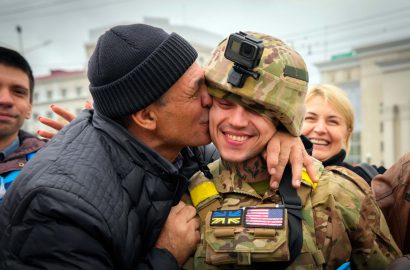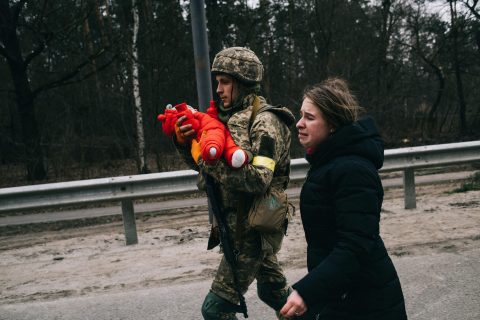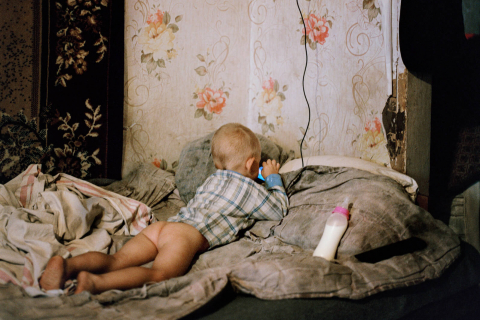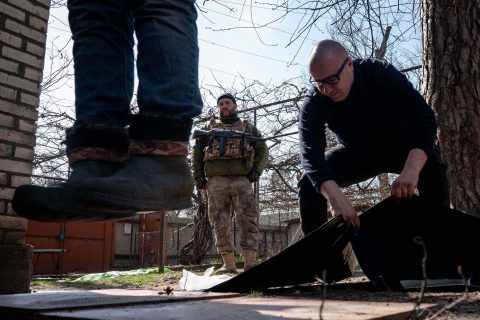
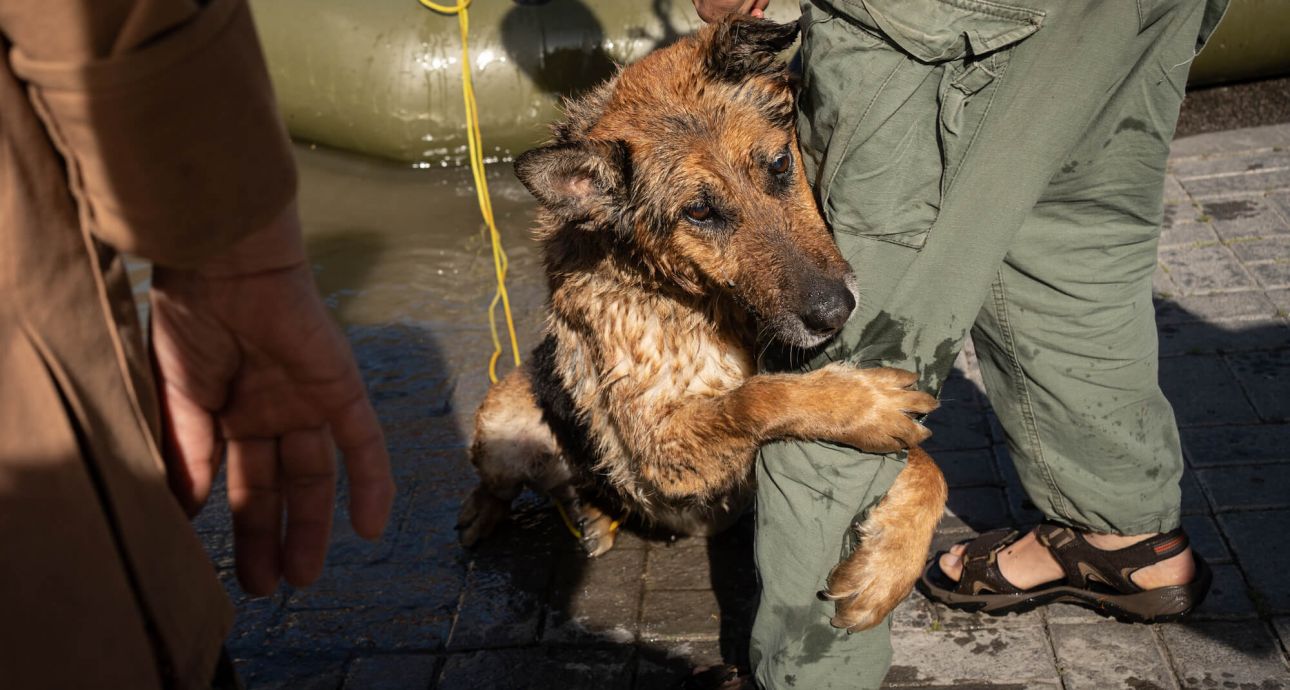
Ten Iconic Photos from the War by Sergiy Korovayny
The hometown of Ukrainian photographer Sergii Korovayny has been occupied since 2014. Previously, he extensively captured images in Donetsk, but now he documents the full-scale war across Ukraine. He collaborates with international media, including The Wall Street Journal, The Washington Post, The Guardian, Financial Times, and others. Recently, his photograph featuring a Kherson dog seemingly embracing its rescuer went viral on the internet, becoming a significant testimony to the tragedy of the dam of the Kakhovka Hydroelectric Power Plant explosion. Sergii shared the story behind this and other iconic shots with Bird in Flight magazine.
In the bomb shelter
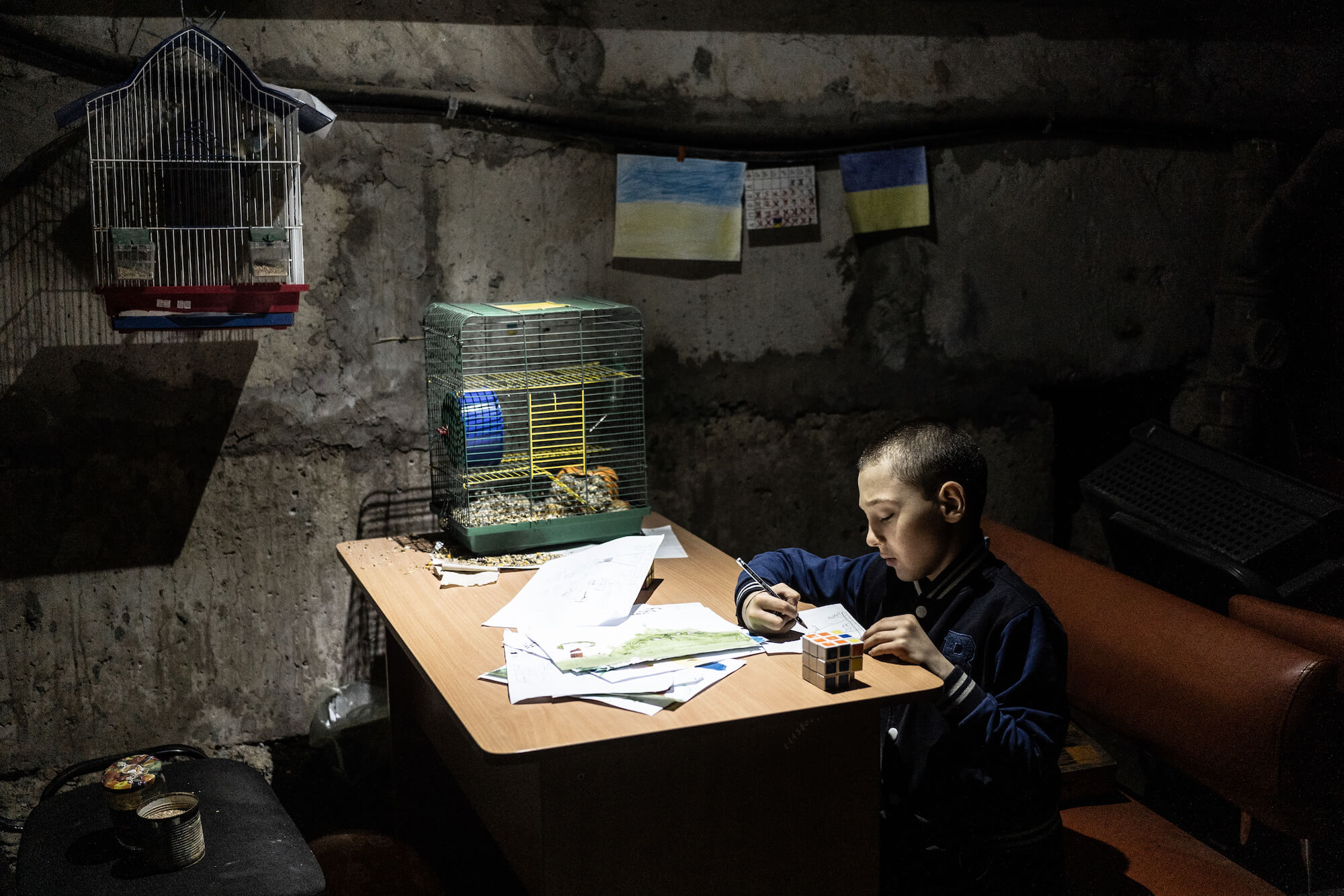
This is Kutuzivka, a village in Kharkiv region that was liberated even before the counteroffensive, around April. I took this photo about a month after that, but the residents are still hiding in the damp basement – they’re afraid to go out due to shelling or because their homes have been destroyed. At that time, people were still living in the Kharkiv metro as well. This is a shelter in Kutuzivka’s kindergarten where many residents of the village sought refuge. In the photo is Timofiy, he had his own corner where he would draw, and also a parrot and a hamster. Timofiy talked very maturely, saying, “Well, we’re living here because we have nowhere else to live.” It struck me. Obviously, living in a basement is detrimental to their health, but people chose safety, of course.
I don’t know what happened to Timofiy now – unfortunately, I didn’t exchange contacts back then. And by the way, this is one of my biggest ethical dilemmas. Although I still try to stay in touch with the subjects of my photos and help them, the work often looks like you run somewhere, quickly take a shot, then the shelling starts, and you run again. Or you work with a large group of other media. In short, it’s not always possible to exchange contacts.
People

Inscriptions on the fences say "People", "Children", "People live here"
I made this series of photographs in villages around Borodyanka after the liberation of Kyiv region. People were trying to show that there were no military personnel in their yards, only civilians, so that the Russians wouldn’t come to them. Of course, it didn’t help: no matter where I went, in every village there were still people tortured and killed. Similar inscriptions were found everywhere there was occupation: in Kharkiv, Kherson, Sumy, and Chernihiv regions. Occupation, in general, is perhaps the worst aspect of this war – when you are defenseless, when they can do whatever they want to you. And with these inscriptions, living in the 21st century, you have to prove that you are human, that you have the right to life.
Funeral
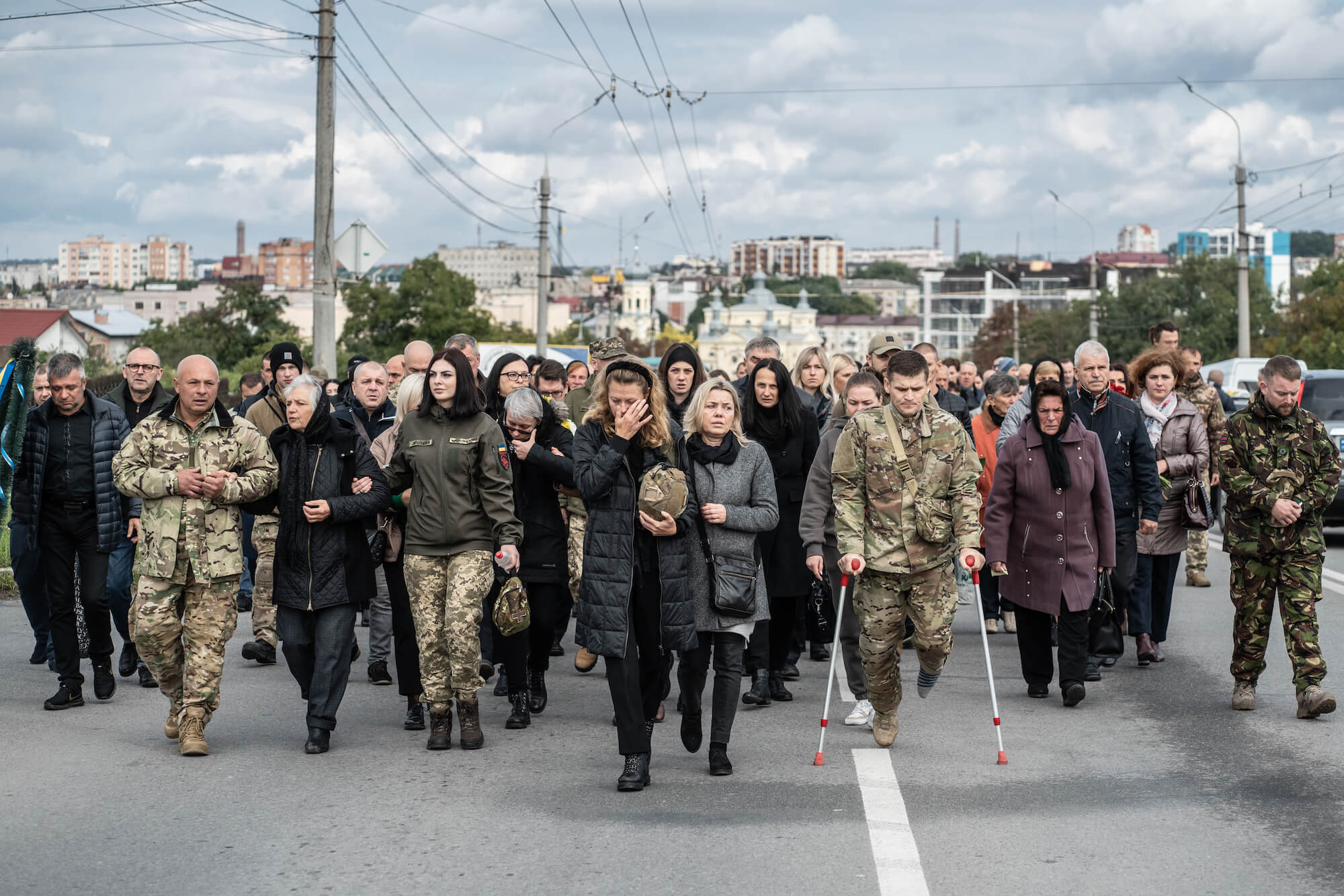
This is a photograph of a military funeral for a soldier with the call sign “Britanets.” He had left Ukraine a long time ago and lived in Britain, where he had a business, but he returned with the start of the war. He was 44 years old.
I work extensively with The Wall Street Journal, and one of our teams was in the eastern part of the country, covering the story of this soldier’s unit. They had just recorded an interview with him when someone called and informed them that his comrades had been blown up on a minefield. The “Britanets” went with a group to evacuate them and ended up being blown up himself, practically in front of the journalists. We created a story about his life and death.
The woman crying in the photo is his wife. He also had a five-year-old son who hardly speaks Ukrainian because he grew up in Britain.
In the past year, I have photographed many funerals, which, obviously, is abnormal, but it is already perceived simply as part of the job. This is an example of how war changes our sense of normalcy. I won’t say anything new—there’s always a limit in such situations. On the one hand, I don’t want to disturb people in their moment of grief, but on the other hand, these are events that need to be shown, especially since I work for a Western audience. Therefore, like in many other situations, I often miss good shots when I clearly see that my presence is inappropriate. I won’t intrude with my camera in the face of someone who doesn’t want it. I guess I’m too empathetic for my profession, although maybe that’s the only right way. Surprisingly, some people don’t mind being photographed at funerals and even want the world to see it. From a technical standpoint, I try to capture such events in silent mode to avoid disturbing anyone with the clicking sounds.
HIMARS
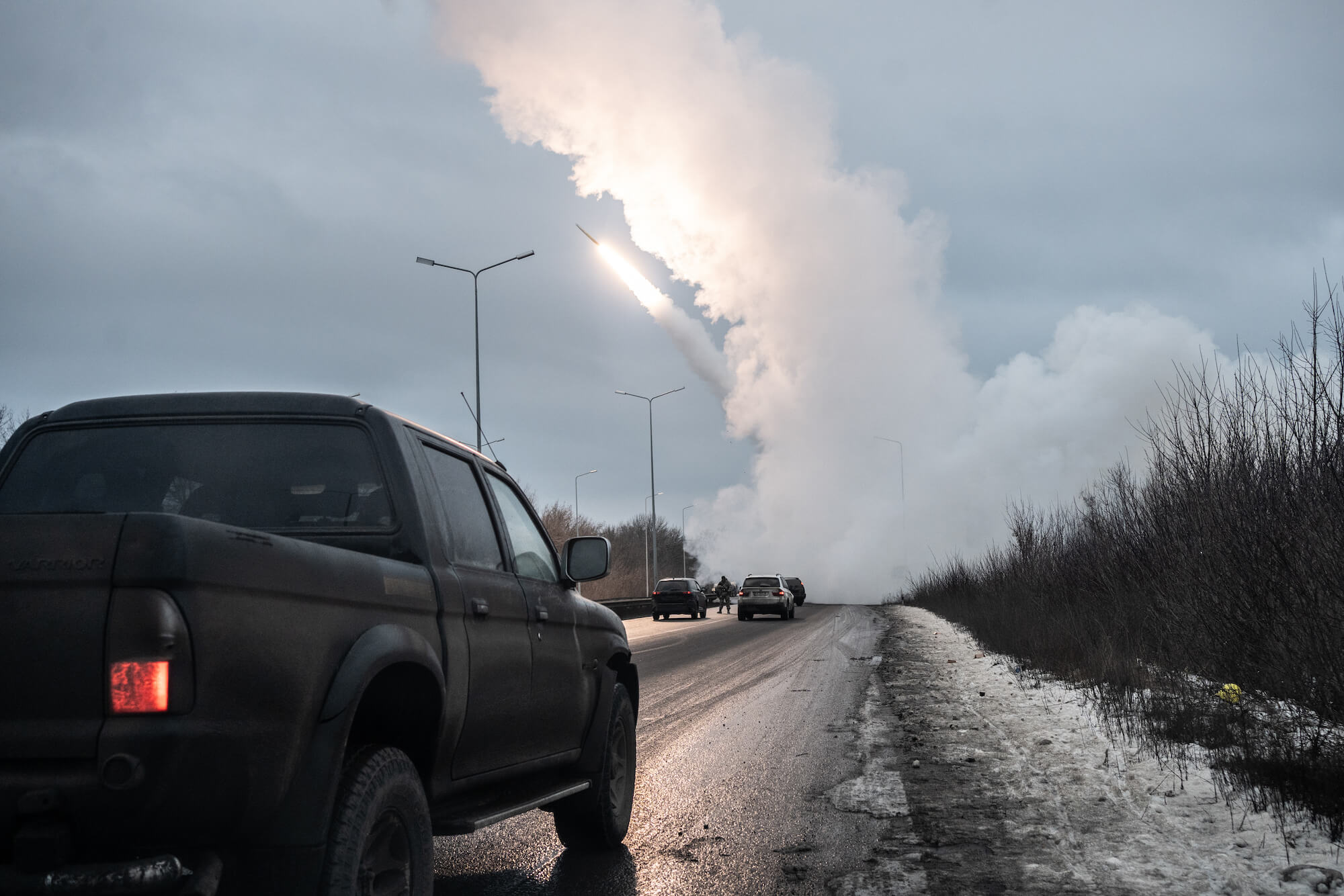
Since I am from Donetsk and have worked there extensively, the editor and I decided to create a mix of archival photos of the region before and during the full-scale war. So in February, I was traveling from Sloviansk to Kramatorsk and got caught in traffic. It turned out that the traffic jam was caused by a HIMARS vehicle. Such systems are very difficult to photograph and even gain access to because they are valuable weapons. I had literally five seconds to capture it in action. I took a shot from the car window, and that was it—the HIMARS immediately drove off, and the traffic jam disappeared in two minutes. I was euphoric because the week had been tough, and I managed to capture such a moment. Since then, I have seen HIMARS and their operations many times, but that was the first one.
Rescue dog
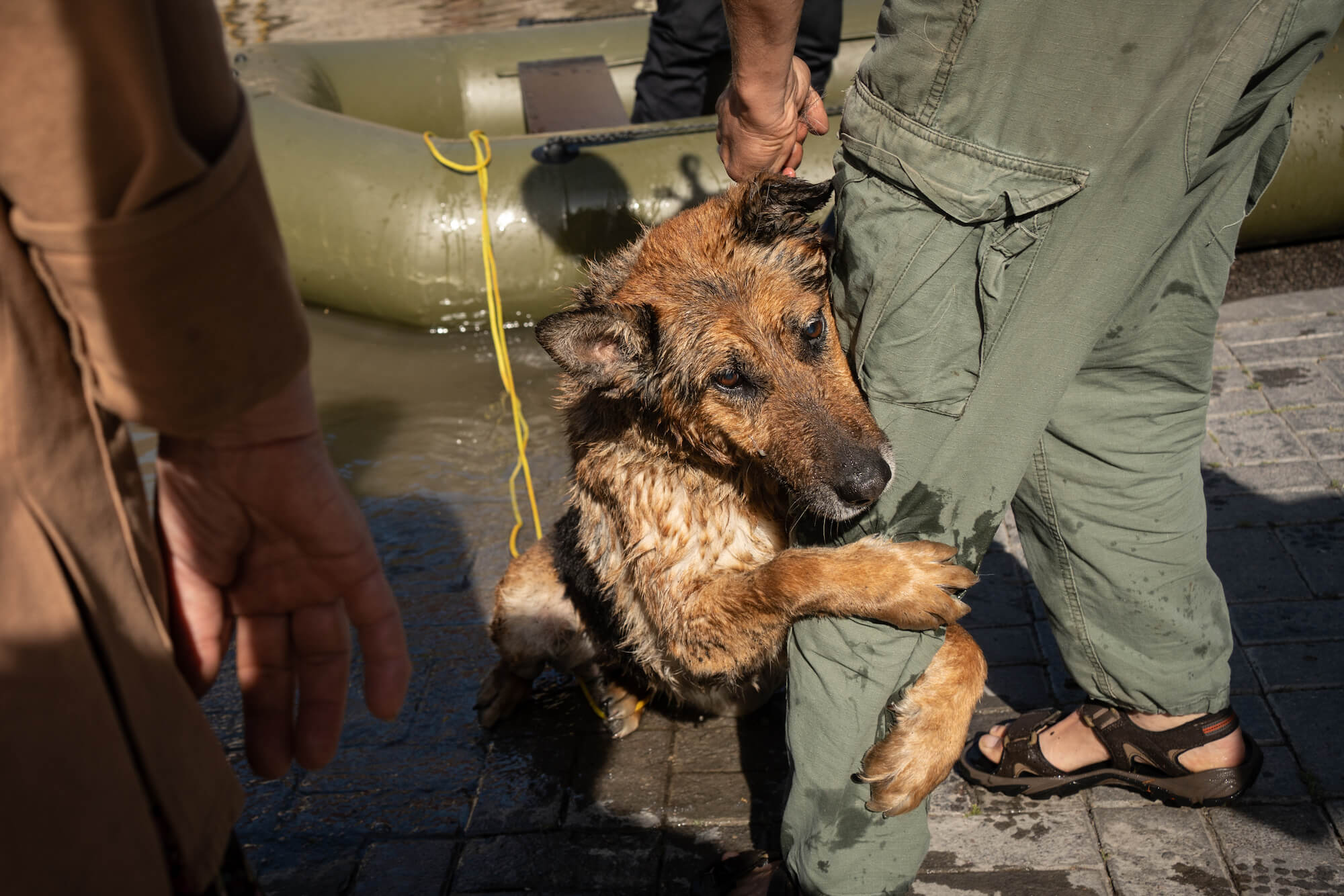
On the second day after the explosion of the Kakhovka Hydroelectric Power Plant dam, we were capturing the evacuation in Kherson. At some point, a boat with this dog passed by us. The dog stayed in the water for a very long time before being rescued, so it couldn’t even walk properly—its paws were numb from the cold. And when they pulled the dog out of the boat, it instinctively clung to the rescuer, probably feeling the water.
I realized how it looked later when I was reviewing the photo. As a spectator, I saw the image, and it was the first time my own photograph moved me so deeply. The dog’s gesture spoke volumes. The image spread among us and among foreigners, and that’s a good thing. I even had several interviews with international media who already knew me but probably wanted to talk specifically because of this photo. So the photo helped convey a very important message that everyone suffers—both humans and animals—as a result of the dam explosion, and that it is a war crime.
I found out that it was a domestic dog rescued from the water by volunteers from the Kharkiv-based organization “Animal Rescue.” She’s a girl, and her name is Ginny. Even back then, I saw that they were drying her off, feeding her, and that everything was fine with her. Later, she was taken for treatment to Odessa.
Light
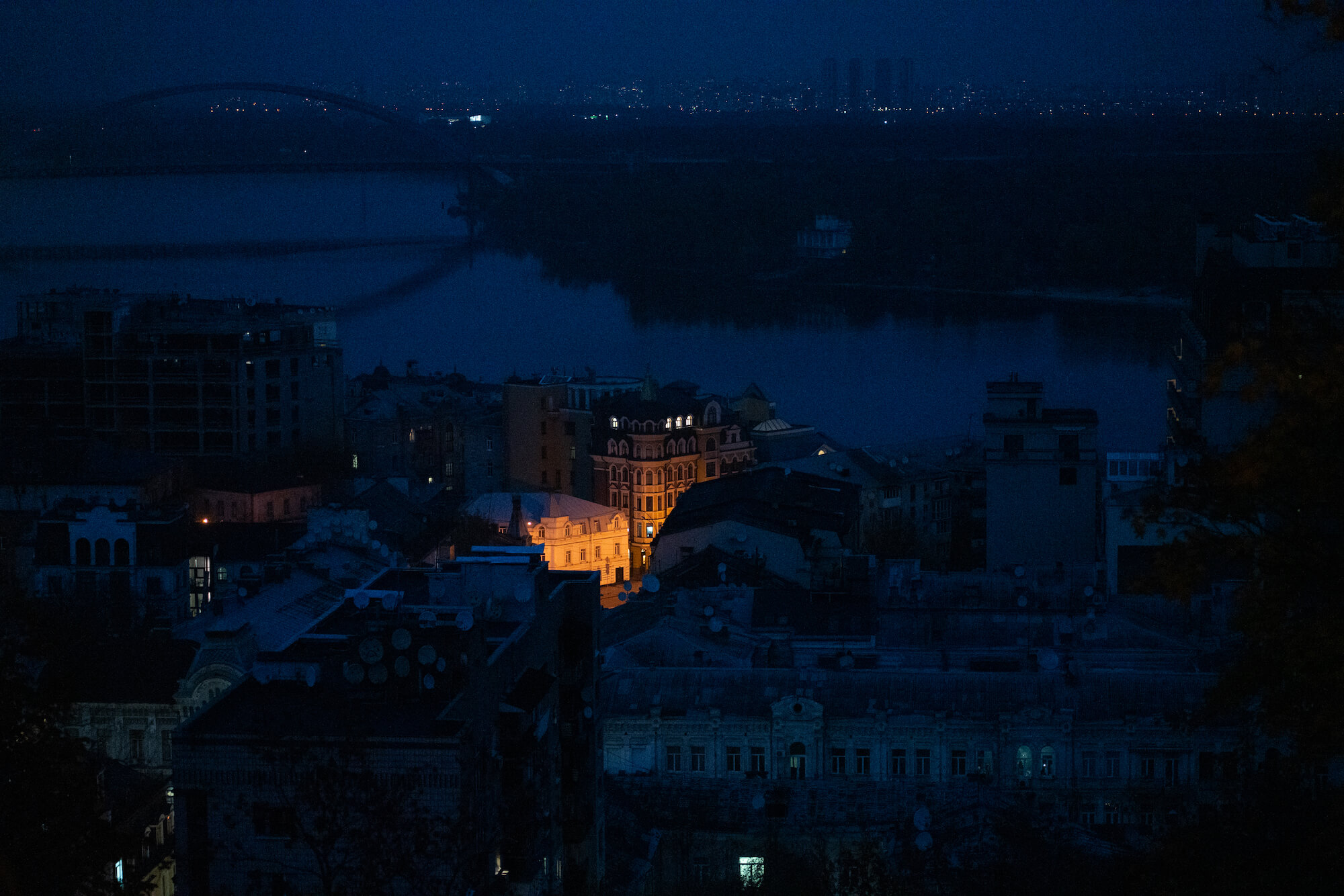
This is Kyiv during the blackout period. It was a difficult time for everyone and a visually unique experience. I was walking through dark streets and came across an illuminated house. As a result, this photograph made it to the cover of the WSJ because it is truly illustrative. The image is not just about what we literally see, but also about hope and the fact that light still exists, that light will prevail. Yes, it’s very cliché, but there’s nothing wrong with being sentimental sometimes. We truly went through that winter and even became stronger. We now have charging stations and plans for any situation in life.
Bakhmut
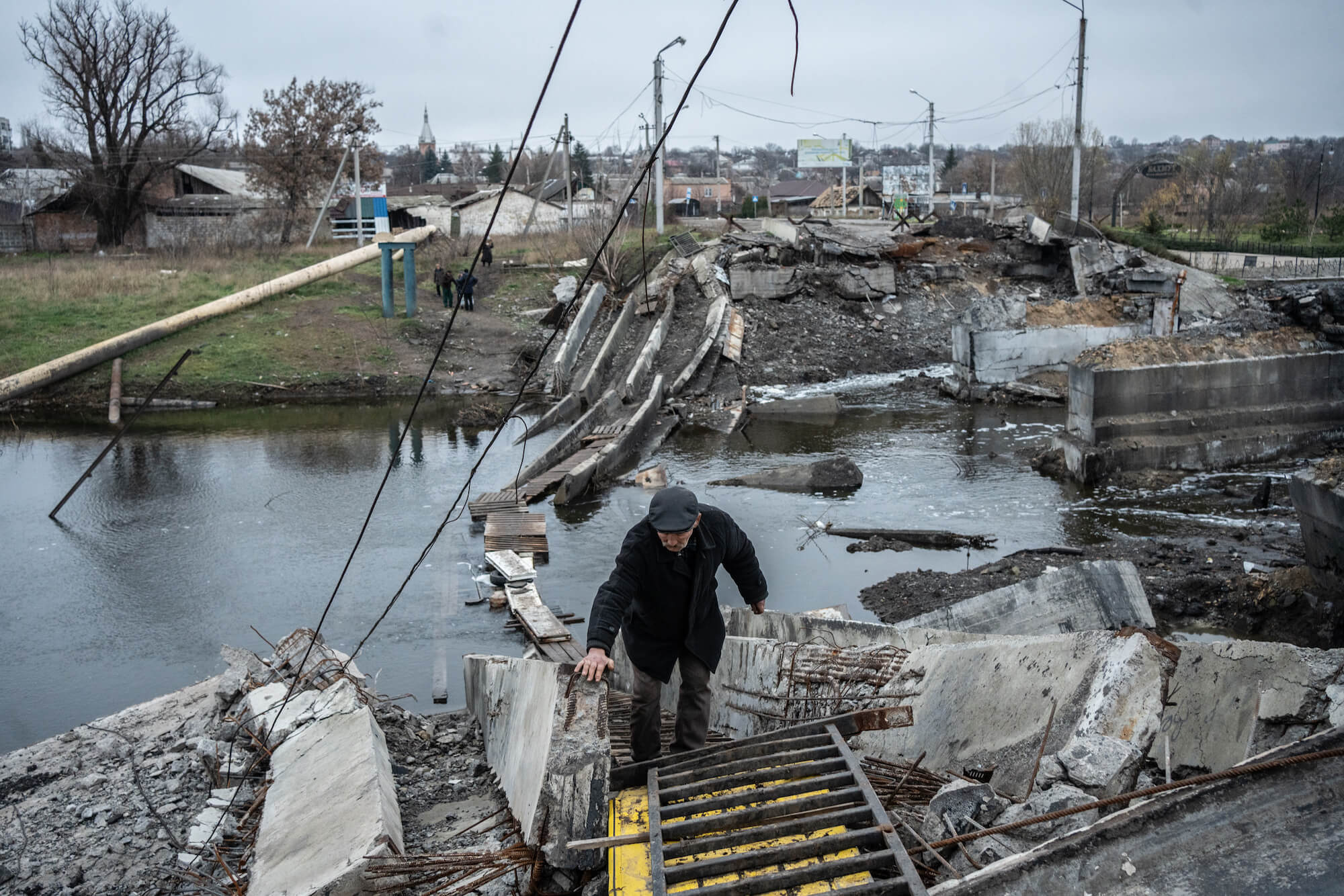
This is winter of 2022: the city is not yet captured, the Russians are somewhere on the outskirts. I spent a lot of time in Bakhmut, once leading photography workshops for teenagers or simply staying in the city during business trips. So it was painful for me to see what was happening to Bakhmut, how the city was becoming a ghost town.
Of course, it was a very difficult ordeal for the civilians to live there. In the photo, a local crosses the river over a destroyed bridge in the cold to get humanitarian aid or water. It saddens me to see how many people were there throughout this time. But, on the other hand, I understand their motivation very well. My relatives also stayed in the occupied territory in the Donetsk region. They are elderly and very attached to their home, afraid of something new.
Shelling of Kyiv
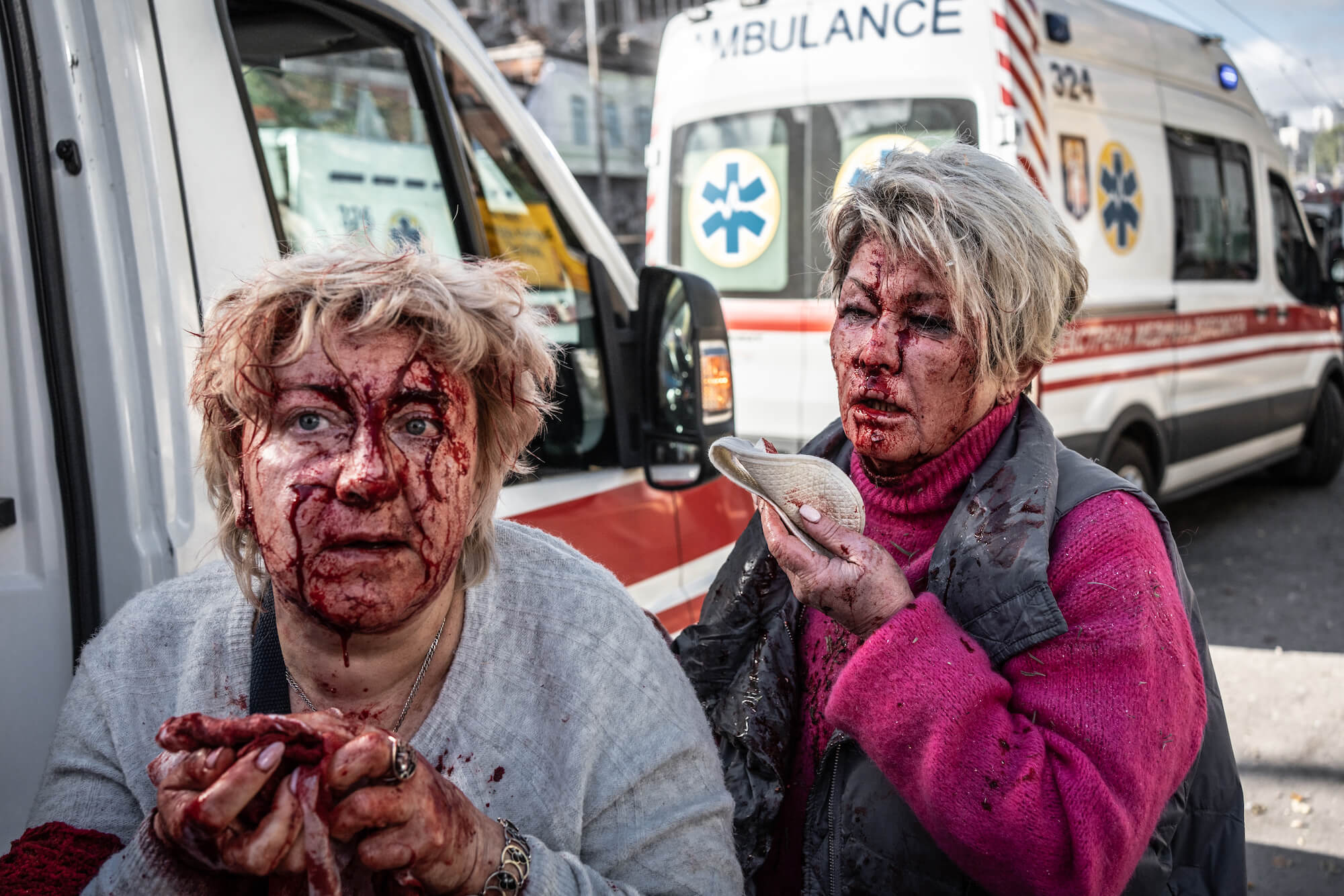
These two women were injured during the first mass shelling of Kyiv in a long time on October 10th. I was in Obolon (Kyiv district) when I heard the news and immediately went to the intersection of Shevchenko Boulevard and Volodymyrska Street. There was an impact, and many people were also injured by shattered glass from the explosion.
The behavior of the Russians and some of our fellow countrymen who are convinced that all of this is fake deeply disturbs me. I received many comments directly under this photo stating that it was staged, “wipe the jam off your faces.” For me, this is evidence of some kind of absolute moral decline.
Injured
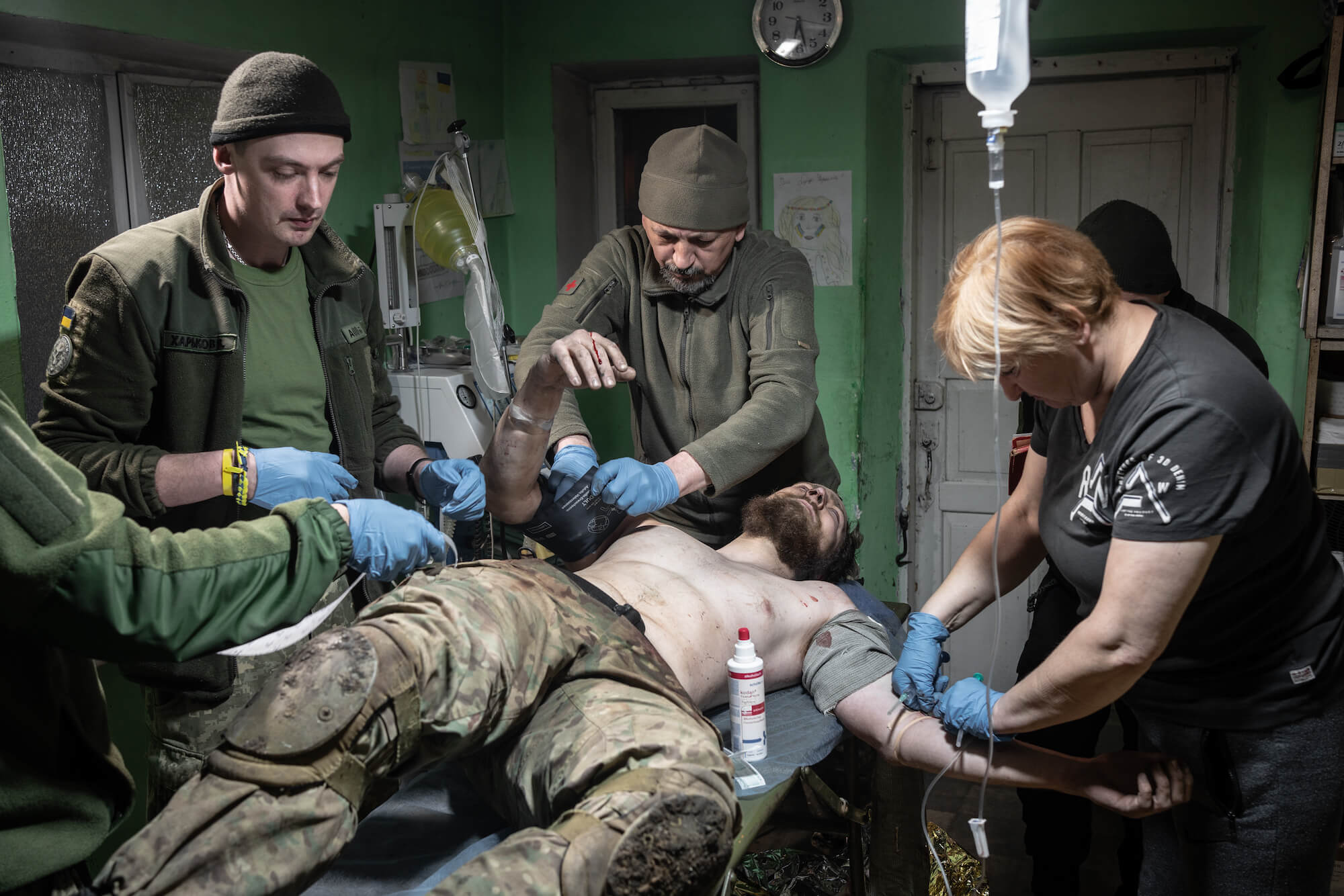
In the photo, there is a stabilization point on the Avdiivka direction. It’s impressive when very young guys are brought to such places. For example, this is Stas from Poltava, he is only 24 years old. He suffered a severe abdominal injury.
I have undergone several first aid courses myself; fortunately, I haven’t had to apply this knowledge in practice yet. But it’s amazing to see that it all works. You observe the doctors doing something with the wound, and suddenly the person starts breathing calmly, the tension disappears from the faces of the medics — the crisis is over. So this point is a place where you literally witness the fight for life against death, one of the few in the world. It’s interesting how in real life you have to notice so many biblical, mythical, or literary things.
I am impressed by the skill of our doctors, how coordinated they work and tirelessly continue their work day after day. By the way, they saved Stas.
Fish
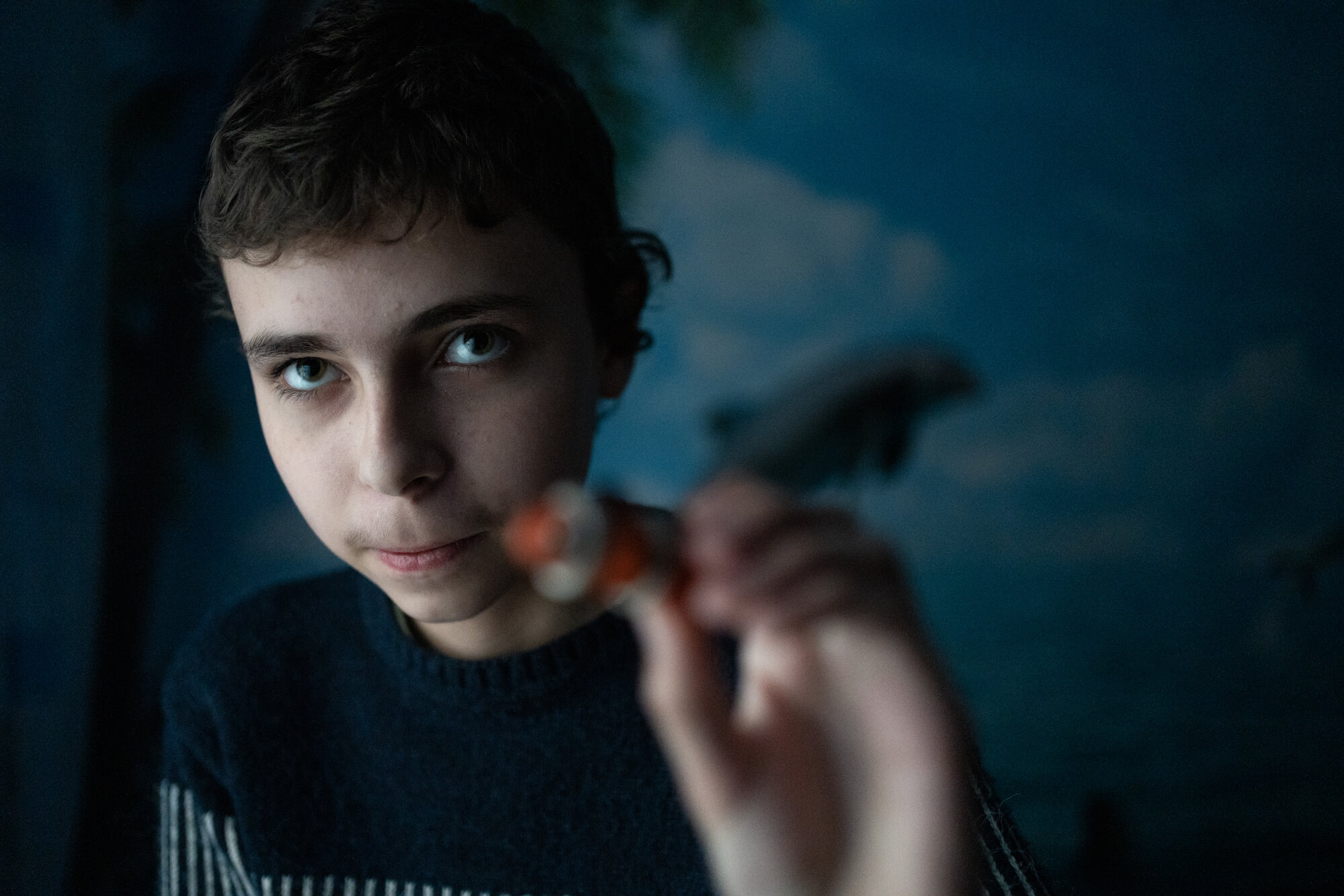
The boy’s name is Danilo, he is from Kherson. He doesn’t have parents, his grandparents take care of him. They survived the occupation by selling roses from their garden. The little boy stayed at home all this time, they were afraid to let him go outside. And after the liberation of the city, their neighborhood started getting heavily shelled, so one trouble after another.
So Danilo looked pale, sad, and weak. But when we were talking, he wanted to show me something and led me to his room. It turned out that the boy makes various things out of plasticine or building blocks – he has a huge collection of different creatures and mechanisms. It was clear that he was passionate about it, that he was very shy but wanted to share it with everyone. It was an incredible moment of connection. I took a few photos, but mostly just talked to him. In the photo, he shows a fish from a cartoon.
I stay in touch with his family. They moved further away from the shelling, so it seems to have gotten a little easier for them.
This publication was created with the financial support of the European Union. The content of the publication is the sole responsibility of DW Akademie / MediaFit Program for Southern and Eastern Ukraine and does not necessarily reflect the views of the European Union.
Others project materials

New and best

